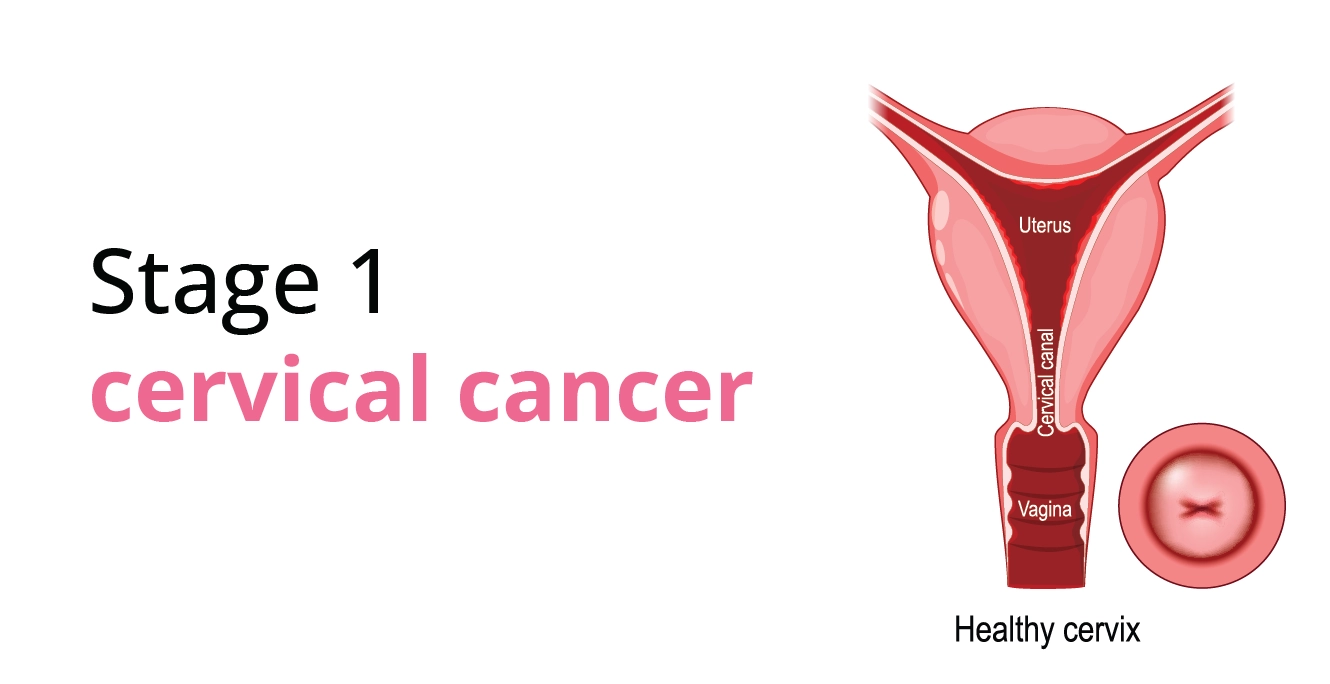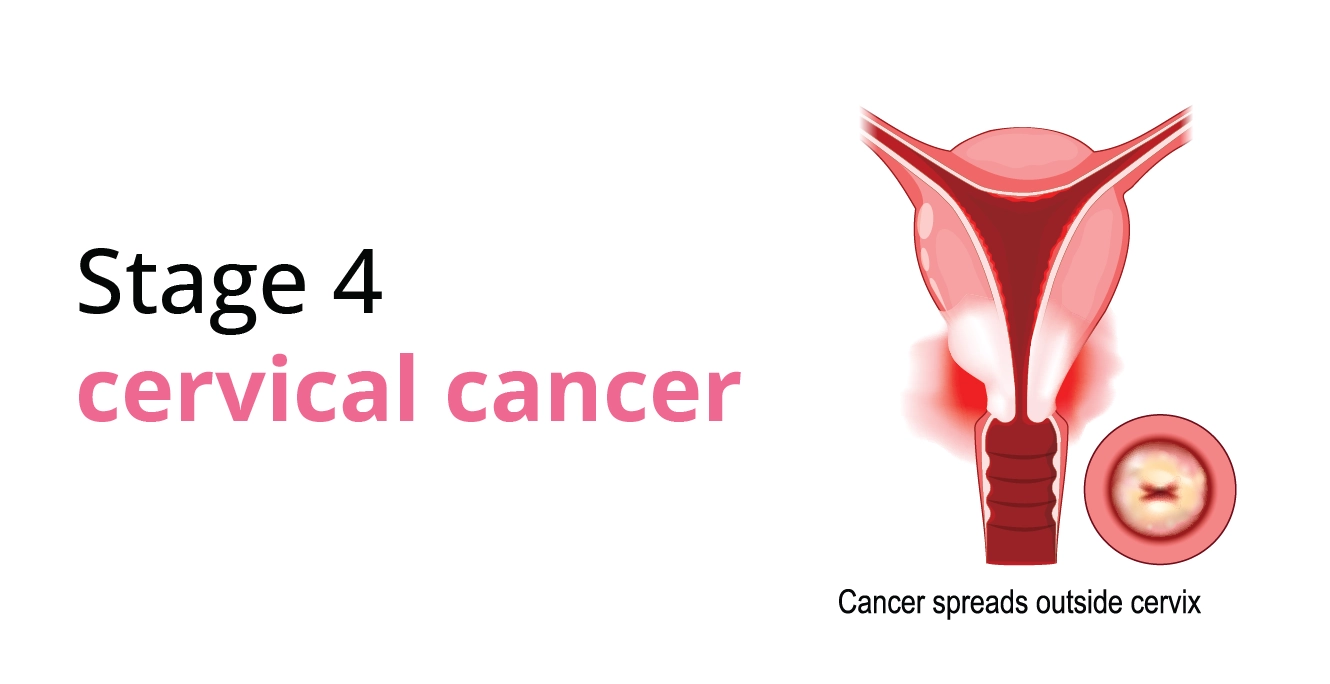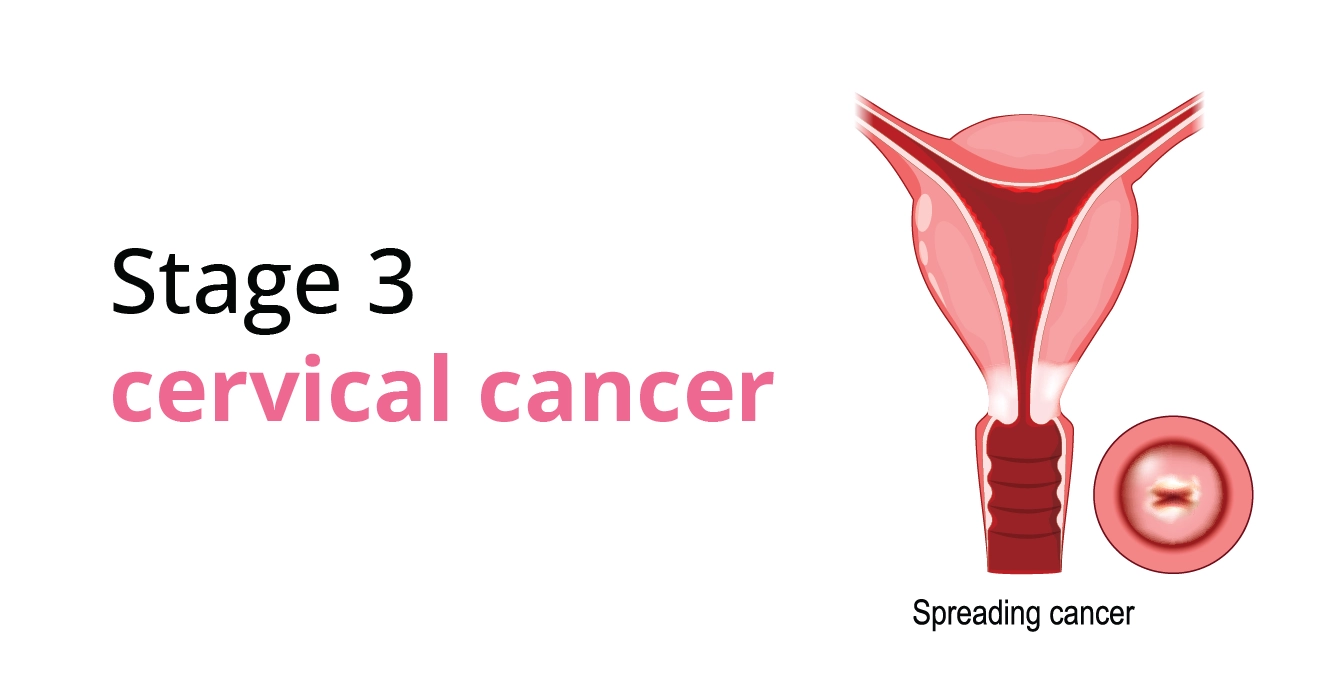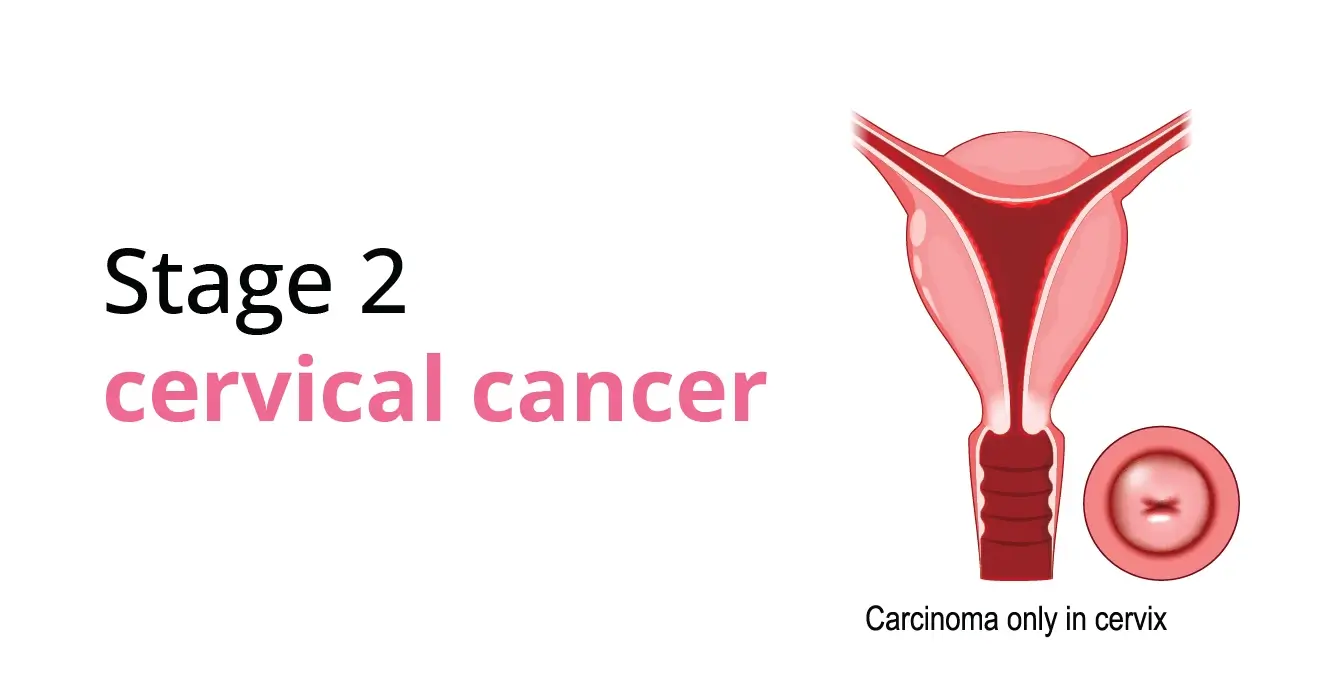
Stage 1 Cervical Cancer: Symptoms, Diagnosis, and Treatment

Table of Contents
- What is Stage 1 Cervical Cancer?
- Symptoms of Stage 1 Cervical Cancer
- Diagnosis of Stage 1 Cervical Cancer
- What are the Treatment Options for Stage 1 Cervical Cancer?
- Is Stage 1 Cervical Cancer Curable?
- Survival Rate of Stage 1 Cervical Cancer
- Lifestyle Changes for Managing Stage 1 Cervical Cancer
- Impact of Stage 1 Cervical Cancer on Fertility
- Takeaway:
Cervical cancer, when caught early, is a battle that you can win easily. All you need is the right approach, timely treatment, and compassionate care.
The cervix is the lower part of the uterus that connects to the vagina. Cervical cancer is the growth of abnormal cells in the cervix. Persistent infection due to human papillomavirus virus is the most common cause of cervical cancer. The first stage of cervical cancer is one in which the cancerous cells have not progressed beyond the cervical area and have not affected nearby or distant tissues.
Is this the end?
No. With timely intervention and a proactive approach, the chances of the cure of stage 1 cervical cancer are very high so, one should stay positive and get the best treatment.
What is Stage 1 Cervical Cancer?
Stage 1 cervical cancer signifies that cancerous cells are present but confined to the cervix. It is further categorised into two sub-stages.
| Stage | Description | Sub-Stage | Details |
| Stage 1A | Microscopic cancer that cannot be seen without a microscope. | 1A1 | Cancer cells invade less than 3 mm into the cervical tissues. |
| 1A2 | Cancer cells invade between 3 mm and 5 mm into the cervical tissues. | ||
| Stage 1B | Larger cancer, detectable through imaging or visible during examination, but still confined to the cervix. | 1B1 | Tumour size is 5 mm to 2 cm. |
| 1B2 | Tumour size is between 2 cm and 4 cm. | ||
| 1B3 | Tumour size exceeds 4 cm, but it is still confined to the cervix. |
Key Notes:
- Stage 1A is identified primarily through microscopic analysis and is considered very early cancer.
- Stage 1B involves tumours that are more apparent and detectable but they have not spread beyond the cervix.
- The sub-stages guide treatment decisions which helps provide the required care considering the tumour’s size and depth of invasion.
Symptoms of Stage 1 Cervical Cancer
During the early stage, cervical cancer may not show many symptoms, however, some women may experience:
- Abnormal vaginal bleeding. This can be between periods, after intercourse or post-menopause.
- Watery and blood-streaked discharge with a foul odour.
- Pelvic pain or discomfort during sexual activity.
- Menstrual changes, such as longer or heavier periods.
These symptoms can also occur due to other conditions, so it’s essential to consult a doctor if you notice any of these Symptoms.
Diagnosis of Stage 1 Cervical Cancer
To confirm stage 1 cervical cancer, doctors usually use the following diagnostic methods:
| Test Name | Why is it Done? |
| Pap Smear Test | Detects abnormal cells in the cervix. This is often the first step in cervical cancer screening. |
| HPV Test | Identifies the presence of high-risk HPV types linked to cervical cancer. |
| Colposcopy | A detailed examination of the cervix using a magnifying device to spot abnormal tissues. |
| Biopsy | Involves taking a small tissue sample for microscopic analysis to confirm cancer and determine the stage. |
| Imaging Tests | MRI, CT scans or ultrasounds may be used to assess the tumour’s size and confirm that it hasn’t spread. |
What are the Treatment Options for Stage 1 Cervical Cancer?
The treatment for stage 1 cervical cancer depends on factors such as the sub-stage, tumour size and a woman’s fertility preferences. Common treatment options include
| Treatment Type | Procedure | Details | Suitable For |
| Surgery | Cone Biopsy | Removes a cone-shaped section of the cervix containing cancerous tissue. | Early-stage cancer (1A1), women preserving fertility. |
| Simple Hysterectomy | Removes the cervix and uterus. | Smaller tumours; not focused on preserving fertility. | |
| Radical Hysterectomy | Removes the cervix, uterus, nearby tissues, and part of the vagina. | Larger tumours (1B1–1B3), when more aggressive treatment is needed. | |
| Radiation Therapy | External Beam Radiation or Brachytherapy | High-energy rays target cancer cells to destroy them. | Often combined with surgery, especially for 1B sub-stages. |
| Chemotherapy | Low-dose Chemotherapy with Radiation (CRT) | Enhances the effectiveness of radiation therapy. | Advanced stage 1B cases requiring intensive treatment. |
| Fertility-Sparing Options | Radical Trachelectomy | Removes the cervix and surrounding tissues but preserves the uterus. | Women with smaller tumours who wish to retain fertility. |
Your doctor will guide you through the options based on your health and personal priorities.
Key Notes:
- The choice of treatment depends on the tumour’s size, depth of invasion, and the patient’s fertility preferences.
- Surgery is typically the first-line treatment for early-stage cases especially 1A.
- Fertility-sparing treatments are prioritised for younger women or those planning future pregnancies.
- Radiation and chemotherapy are often used for larger tumours or when surgery alone is insufficient.
Is Stage 1 Cervical Cancer Curable?
First-stage cervical cancer is one of the treatable cases of cancer. If diagnosed early, treatment options such as surgery or radiation therapy yield high survival chances, and many women lead cancer-free lives.
Survival Rate of Stage 1 Cervical Cancer
The survival rate for stage 1 cervical cancer is encouraging:
- For stage 1A, the 5-year survival rate is above 95%.
- For stage 1B, it ranges from 80% to 90% depending on the exact sub-stage and treatment approaches highlight the importance of early diagnosis and prompt treatment.
Lifestyle Changes for Managing Stage 1 Cervical Cancer
Though medical treatment is important for curing cervical cancer, some lifestyle changes can be adapted to aid recovery and healthy living.
- Healthy Diet: Include fruits, vegetables, whole grains, and lean proteins to boost immunity.
- Exercise: Regular physical activity can improve energy levels and reduce treatment side effects.
- Quit Smoking: Smoking weakens the immune system and may affect treatment outcomes.
- Stress Management: Practices like yoga, meditation or counselling can help manage anxiety during recovery.
Impact of Stage 1 Cervical Cancer on Fertility
| Factor | Its Impact |
| Treatment Affects | Hysterectomy (simple or radical): It permanently removes the uterus and cervix, making pregnancy impossible.
Radiation Therapy: It may damage the ovaries and uterus leading to Female infertility. |
| Fertility-Sparing Options | Cone Biopsy: Removes only the affected tissue, preserving the uterus and the ability to conceive.
Radical Trachelectomy: Removes the cervix and surrounding tissues while keeping the uterus intact, allowing for future pregnancies. |
| Tumour Size and Stage | The size and stage of the tumour determine the feasibility of fertility-preserving for Cancer treatments.
Fertility options are more viable for sub-stages 1A1 and 1A2, and sometimes 1B1, with proper medical evaluation. |
| Fertility Preservation Options | Always discuss fertility plans with your oncologist before starting treatment.
Doing so will help you explore options like egg freezing or embryo preservation. |
| Post-Treatment Fertility Support | Women undergoing fertility-sparing treatments should be monitored closely during pregnancy for risks like premature birth.
Psychological counselling and support groups can provide emotional support for fertility-related concerns. |
By addressing fertility concerns early, personalised treatment plans can be made to align with a patient’s personal goals and medical needs.
Takeaway:
- Cancer is not only overwhelming for the person suffering from it but also for their close ones. But this doesn’t mean that one should lose hope.
- Early diagnosis and effective treatment options provide a strong chance of recovery and ensure a healthy life.
- Understanding the symptoms, getting timely medical advice and exploring fertility-preserving treatments can empower you to make informed decisions about your health.
- With awareness and a proactive mindset, cervical cancer is a challenge that can be overcome. Don’t lose hope and move ahead with a positive approach.
Word From An Expert:
“First-stage cervical cancer is a treatable disease if it receives the correct diagnosis. Frequent screening, monitoring of symptoms, and prompt medical intervention play a key role in the patient getting a positive outcome.” ~ Dr. Jyotsna Pundir
Our Fertility Specialists
Related Blogs
To know more
Birla Fertility & IVF aims at transforming the future of fertility globally, through outstanding clinical outcomes, research, innovation and compassionate care.
Had an IVF Failure?
Talk to our fertility experts

 Our Centers
Our Centers










